Srikanth Korse
On Improving Error Resilience of Neural End-to-End Speech Coders
Jun 13, 2024Abstract:Error resilient tools like Packet Loss Concealment (PLC) and Forward Error Correction (FEC) are essential to maintain a reliable speech communication for applications like Voice over Internet Protocol (VoIP), where packets are frequently delayed and lost. In recent times, end-to-end neural speech codecs have seen a significant rise, due to their ability to transmit speech signal at low bitrates but few considerations were made about their error resilience in a real system. Recently introduced Neural End-to-End Speech Codec (NESC) can reproduce high quality natural speech at low bitrates. We extend its robustness to packet losses by adding a low complexity network to predict the codebook indices in latent space. Furthermore, we propose a method to add an in-band FEC at an additional bitrate of 0.8 kbps. Both subjective and objective assessment indicate the effectiveness of proposed methods, and demonstrate that coupling PLC and FEC provide significant robustness against packet losses.
NESC: Robust Neural End-2-End Speech Coding with GANs
Jul 07, 2022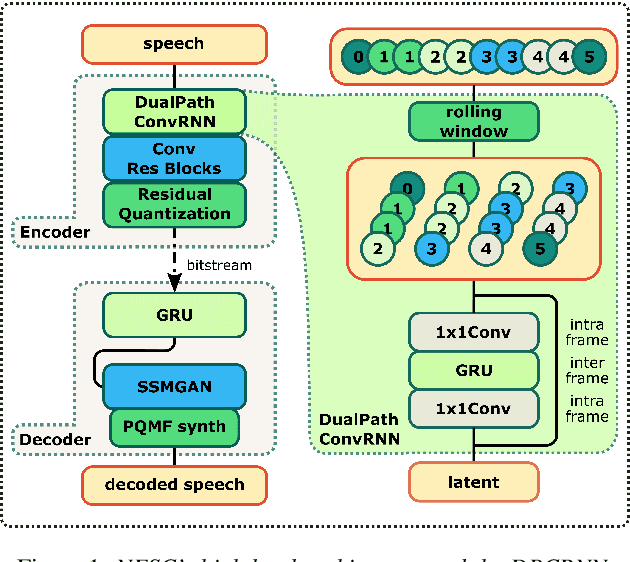
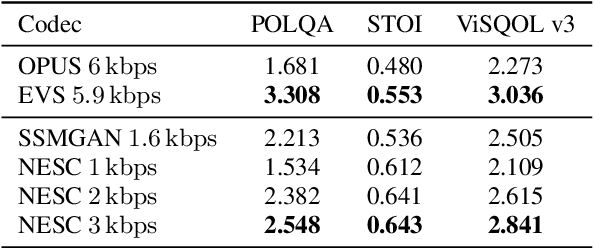
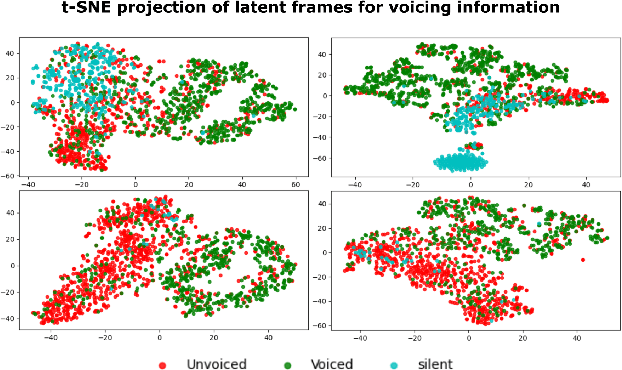
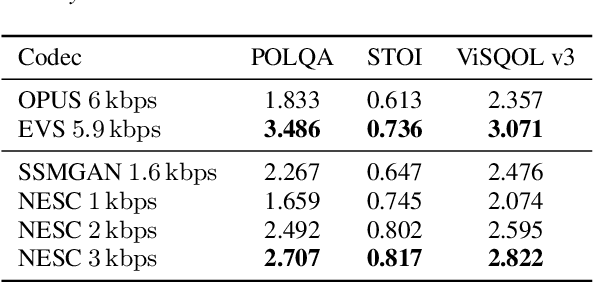
Abstract:Neural networks have proven to be a formidable tool to tackle the problem of speech coding at very low bit rates. However, the design of a neural coder that can be operated robustly under real-world conditions remains a major challenge. Therefore, we present Neural End-2-End Speech Codec (NESC) a robust, scalable end-to-end neural speech codec for high-quality wideband speech coding at 3 kbps. The encoder uses a new architecture configuration, which relies on our proposed Dual-PathConvRNN (DPCRNN) layer, while the decoder architecture is based on our previous work Streamwise-StyleMelGAN. Our subjective listening tests on clean and noisy speech show that NESC is particularly robust to unseen conditions and signal perturbations.
PostGAN: A GAN-Based Post-Processor to Enhance the Quality of Coded Speech
Jan 31, 2022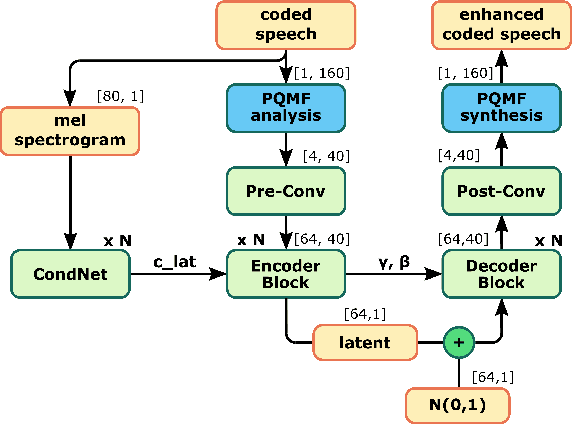
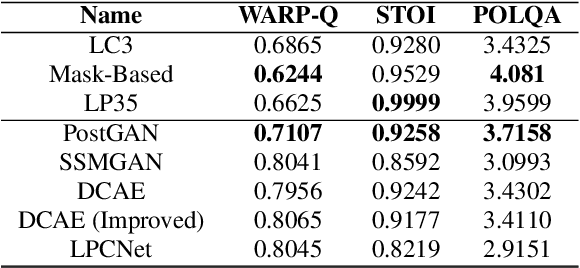
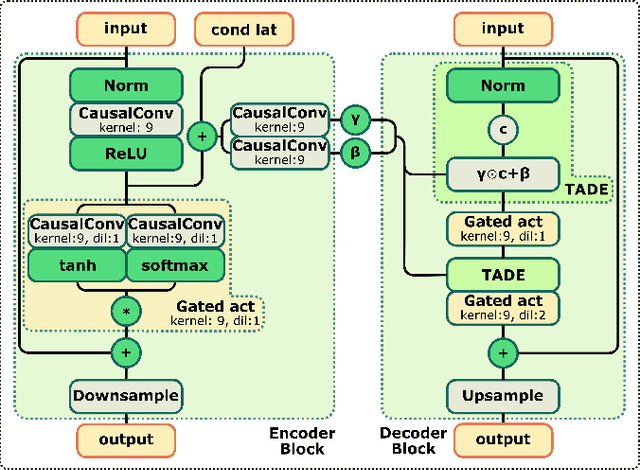
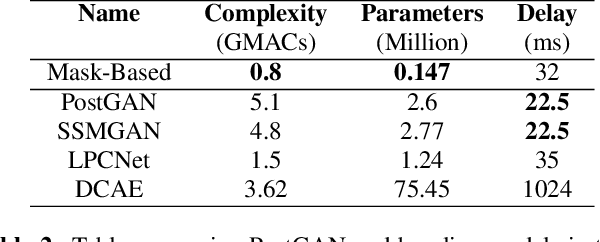
Abstract:The quality of speech coded by transform coding is affected by various artefacts especially when bitrates to quantize the frequency components become too low. In order to mitigate these coding artefacts and enhance the quality of coded speech, a post-processor that relies on a-priori information transmitted from the encoder is traditionally employed at the decoder side. In recent years, several data-driven post-postprocessors have been proposed which were shown to outperform traditional approaches. In this paper, we propose PostGAN, a GAN-based neural post-processor that operates in the sub-band domain and relies on the U-Net architecture and a learned affine transform. It has been tested on the recently standardized low-complexity, low-delay bluetooth codec (LC3) for wideband speech at the lowest bitrate (16 kbit/s). Subjective evaluations and objective scores show that the newly introduced post-processor surpasses previously published methods and can improve the quality of coded speech by around 20 MUSHRA points.
A DNN Based Post-Filter to Enhance the Quality of Coded Speech in MDCT Domain
Jan 28, 2022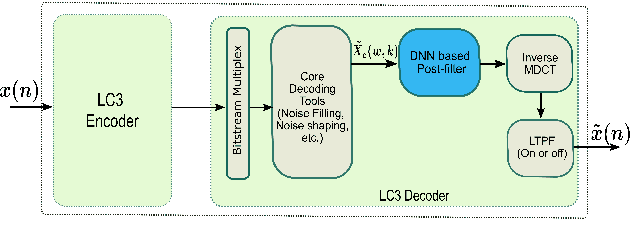
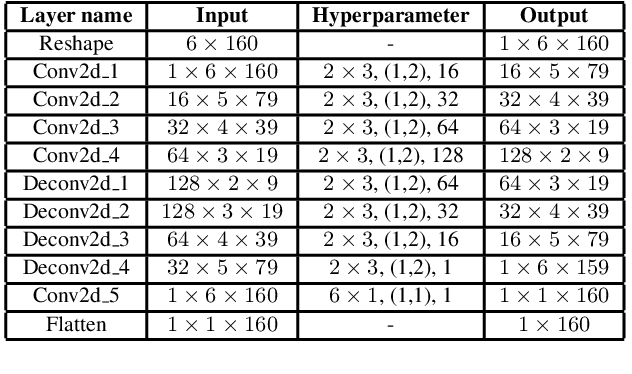
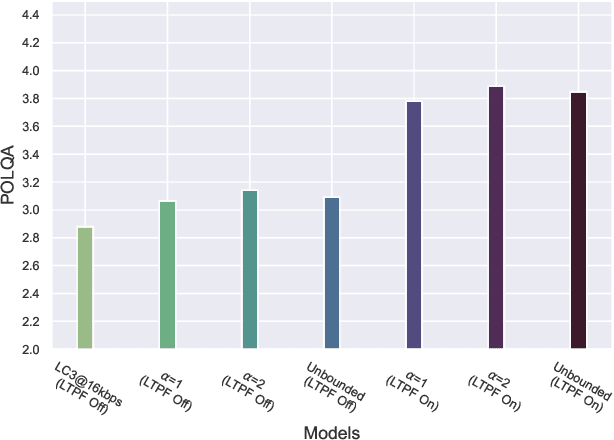
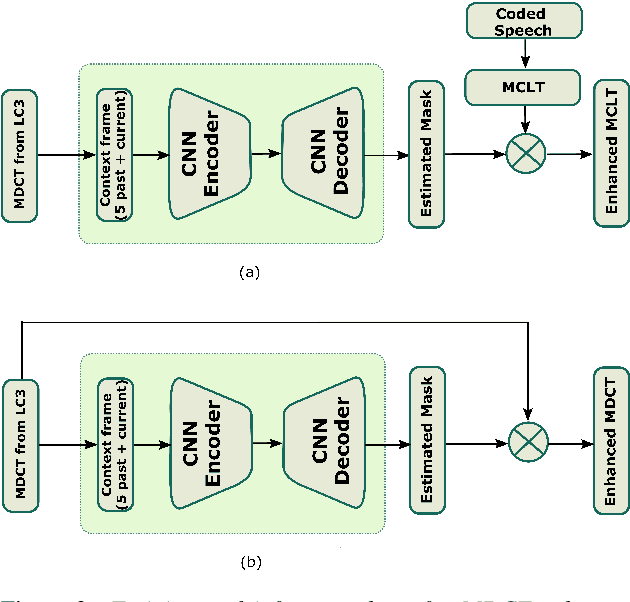
Abstract:Frequency domain processing, and in particular the use of Modified Discrete Cosine Transform (MDCT), is the most widespread approach to audio coding. However, at low bitrates, audio quality, especially for speech, degrades drastically due to the lack of available bits to directly code the transform coefficients. Traditionally, post-filtering has been used to mitigate artefacts in the coded speech by exploiting a-priori information of the source and extra transmitted parameters. Recently, data-driven post-filters have shown better results, but at the cost of significant additional complexity and delay. In this work, we propose a mask-based post-filter operating directly in MDCT domain of the codec, inducing no extra delay. The real-valued mask is applied to the quantized MDCT coefficients and is estimated from a relatively lightweight convolutional encoder-decoder network. Our solution is tested on the recently standardized low-delay, low-complexity codec (LC3) at lowest possible bitrate of 16 kbps. Objective and subjective assessments clearly show the advantage of this approach over the conventional post-filter, with an average improvement of 10 MUSHRA points over the LC3 coded speech.
A Streamwise GAN Vocoder for Wideband Speech Coding at Very Low Bit Rate
Aug 09, 2021
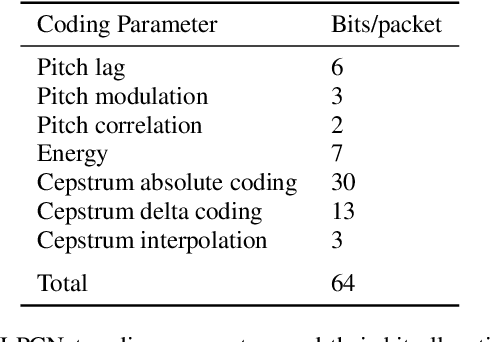
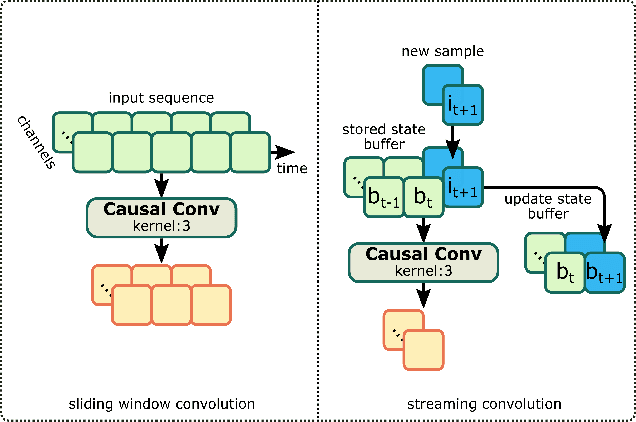
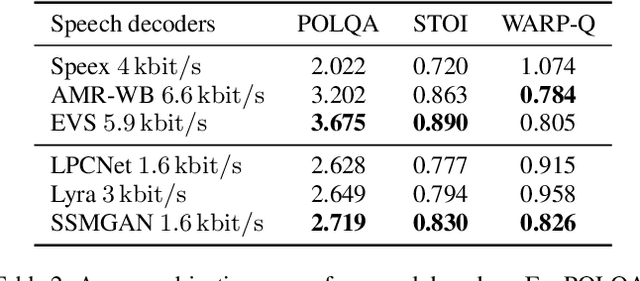
Abstract:Recently, GAN vocoders have seen rapid progress in speech synthesis, starting to outperform autoregressive models in perceptual quality with much higher generation speed. However, autoregressive vocoders are still the common choice for neural generation of speech signals coded at very low bit rates. In this paper, we present a GAN vocoder which is able to generate wideband speech waveforms from parameters coded at 1.6 kbit/s. The proposed model is a modified version of the StyleMelGAN vocoder that can run in frame-by-frame manner, making it suitable for streaming applications. The experimental results show that the proposed model significantly outperforms prior autoregressive vocoders like LPCNet for very low bit rate speech coding, with computational complexity of about 5 GMACs, providing a new state of the art in this domain. Moreover, this streamwise adversarial vocoder delivers quality competitive to advanced speech codecs such as EVS at 5.9 kbit/s on clean speech, which motivates further usage of feed-forward fully-convolutional models for low bit rate speech coding.
Enhancement Of Coded Speech Using a Mask-Based Post-Filter
Oct 12, 2020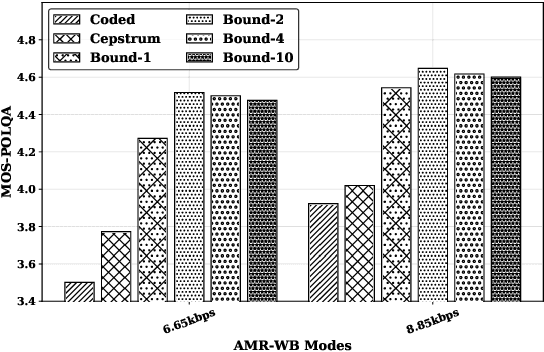

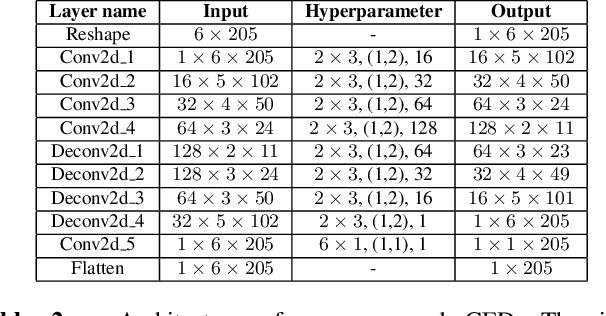
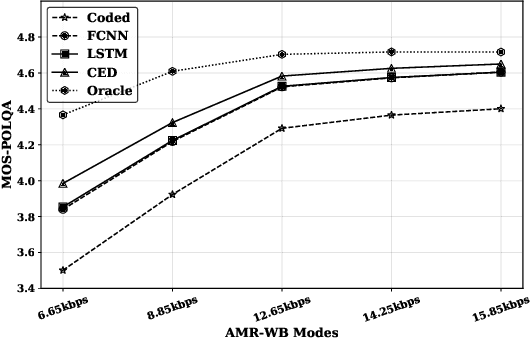
Abstract:The quality of speech codecs deteriorates at low bitrates due to high quantization noise. A post-filter is generally employed to enhance the quality of the coded speech. In this paper, a data-driven post-filter relying on masking in the time-frequency domain is proposed. A fully connected neural network (FCNN), a convolutional encoder-decoder (CED) network and a long short-term memory (LSTM) network are implemeted to estimate a real-valued mask per time-frequency bin. The proposed models were tested on the five lowest operating modes (6.65 kbps-15.85 kbps) of the Adaptive Multi-Rate Wideband codec (AMR-WB). Both objective and subjective evaluations confirm the enhancement of the coded speech and also show the superiority of the mask-based neural network system over a conventional heuristic post-filter used in the standard like ITU-T G.718.
 Add to Chrome
Add to Chrome Add to Firefox
Add to Firefox Add to Edge
Add to Edge